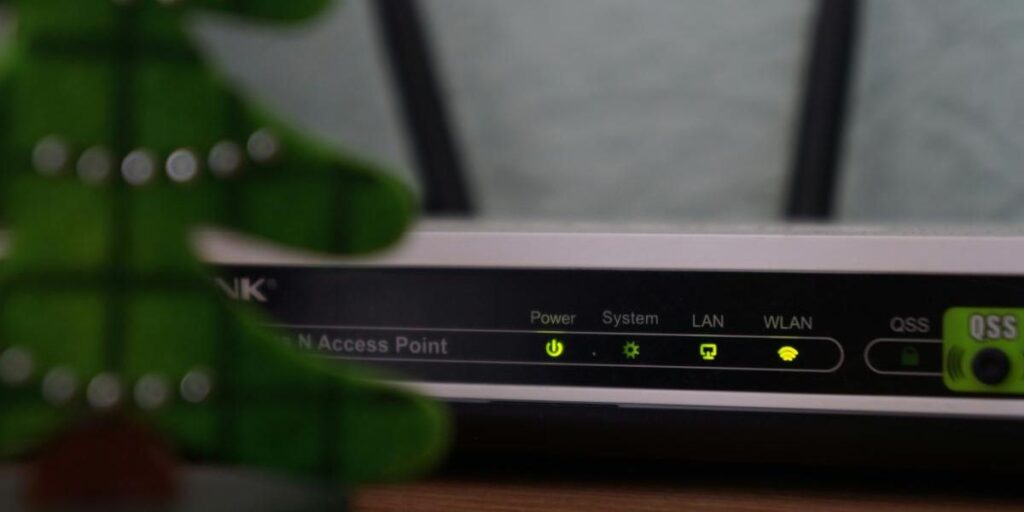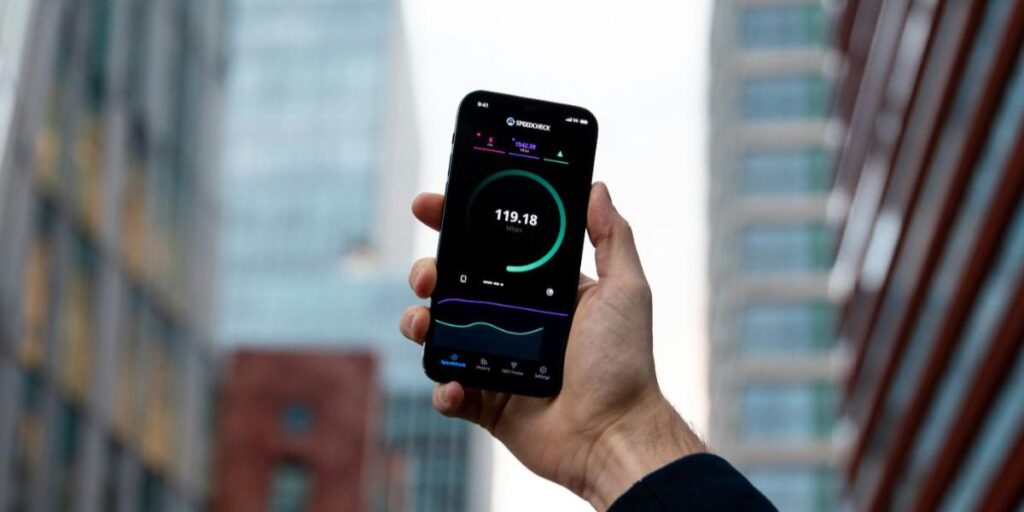Understanding the common culprits of interference is essential to understanding these pesky WiFi issues. Numerous factors, from the layout of our living space to the appliances we use, can affect wireless signals. Identifying these factors can create a more reliable and consistent network experience.
Let’s explore the common causes of WiFi interference and how to mitigate them to enjoy seamless connectivity.
Understanding WiFi signals
When we talk about WiFi, we’re delving into the complex realm of wireless communication that’s become essential in our daily lives. We must understand the two main factors contributing to WiFi performance: the frequency bands that carry data and the basic principles of how signals propagate.

WiFi frequency bands
We commonly use two main frequency bands for WiFi communication: 2.4 GHz and 5 GHz, with the newer 6 GHz band introduced for WiFi 6E. The 2.4 GHz band is more congested because many devices use it, but it’s better for longer-range transmission at the cost of slower data rates. On the other hand, the 5 GHz band offers faster data speeds due to less congestion, although it has a shorter range. The 6 GHz band brings more channels that reduce interference and provide higher data throughput, which is ideal for dense, high-capacity environments.
2.4 GHz
- Long-range
- Lower data rate
- Higher interference susceptibility
5 GHz
- Short-range
- Higher data rate
- Less congested
6 GHz (WiFi 6E)
- High data throughput
- More channels available
- Ideal for dense environments
Signal propagation basics
Signal propagation refers to how WiFi waves travel from the router to our devices. Factors like the type of material (walls, furniture), distance, and other environmental variables can all influence the strength and quality of WiFi signals.
For example, materials like concrete or metal can greatly attenuate or block signals, leading to poor reception. Additionally, propagation is also affected by the frequency band; higher frequencies, such as 5 GHz, don’t penetrate solid objects, as well as lower frequencies, like 2.4 GHz. Understanding these propagation basics helps us troubleshoot poor connectivity issues.
- Materials: Dense materials like concrete dampen signals.
- Distance: The farther away from the router, the weaker the signal.
- Frequency: Lower frequencies have better penetration but might be slower.
By grasping these fundamental aspects, we will better equip ourselves to navigate and optimize our WiFi networks, ensuring robust and reliable connectivity for all our online activities.
Common sources of WiFi interference

Certain things around us can disrupt the signal when we use WiFi at home or work. Understanding what causes interference can help us improve our connection.
Household appliances
Many everyday appliances emit signals that can clash with our WiFi. Devices such as microwave ovens, cordless phones, and baby monitors operate on frequencies close to the 2.4 GHz WiFi band, often leading to signal disruption when in use. Furthermore, appliances like Bluetooth speakers can interfere with 5 GHz radios, causing a significant impact on wireless network performance.
Physical obstructions
The materials in the walls and floors of our buildings can greatly affect WiFi signals. Thick walls, metal pipes, and reinforced concrete are just some physical barriers that can weaken or block WiFi signals. Arranging our WiFi setup to avoid these obstructions whenever possible is a simple but effective way to reduce interference.
Co-channel and adjacent channel interference
Cochannel and adjacent channel interference can occur in crowded areas where many WiFi networks operate. This happens when multiple networks occupy the same or nearby channels. For example, in the 2.4 GHz band, routers on channels 1, 6, or 11 are prone to overlapping. Switching to the 5 GHz band or using tools to find a less congested channel can be a beneficial approach to reducing such interference.
Diagnosing interference issues
When it comes to maintaining a robust WiFi connection, accurately diagnosing interference issues is crucial. We’ll guide you through using WiFi analysis tools and how to interpret signal strength and quality to keep your connection strong and stable.
Wifi analysis tools
To start troubleshooting WiFi interference, we need to use WiFi analysis tools. These tools scan the wireless spectrum and identify other networks causing interference. Some effective tools for this purpose include inSSIDer and WiFi Analyzer. These applications provide us with real-time data on signal strength, channels in use, and the presence of any overlapping networks. Using inSSIDer, we’ll get a clear visual map of the wireless landscape around us, making it easier to pinpoint the potential sources of interference.

Interpreting signal strength and quality
Understanding the data from WiFi analysis tools is vital. Signal strength, measured in dBm (decibel-milliwatts), should ideally be between -60 and -30 dBm for a reliable connection. A lower number means a weaker signal which can lead to interference and connection issues. The signal quality is also affected by Signal-to-Noise Ratio (SNR); this determines the clarity of the WiFi signal. By interpreting these metrics, we can adjust our WiFi setup to optimize performance, such as changing the channel or repositioning the router to mitigate interference effects from other devices or networks.
Frequently asked WiFi questions
We often get asked how to deal with WiFi interference, just as we do with bluetooth headphone issues and other tech issues, so here’s a handy FAQ section to help you resolve common issues.
What can I do to resolve WiFi problems?
To mitigate WiFi interference in our home networks, we can change our router’s channel to a less congested one or move the router to a central location away from electronic devices known to cause interference. Utilizing the 5 GHz band can also reduce interference.
How do you identify devices that cause WiFi interference?
We look for devices with the same frequency as our WiFi, such as cordless phones, baby monitors, or Bluetooth devices. Using network analysis tools helps us spot which devices could be causing issues.
What materials block WiFi signals?
Common materials that block WiFi signals include concrete, brick, and metal. These can be found in walls, doors, or large furniture, significantly degrading the strength and reliability of our connection.
How can I minimize WiFi interference from neighboring networks?
To minimize interference from nearby networks, we can use dual-band routers and choose different channels, particularly in the 5 GHz range, which offers more channels and is less congested compared to the 2.4 GHz band.
Are there apps that can detect WiFi interference?
Yes, there are various apps and tools available, such as inSSIDer and WiFi Analyzer, that help detect channels with the least interference and provide insights into the WiFi environment so we can make informed adjustments.
You might like: best smart TV apps






